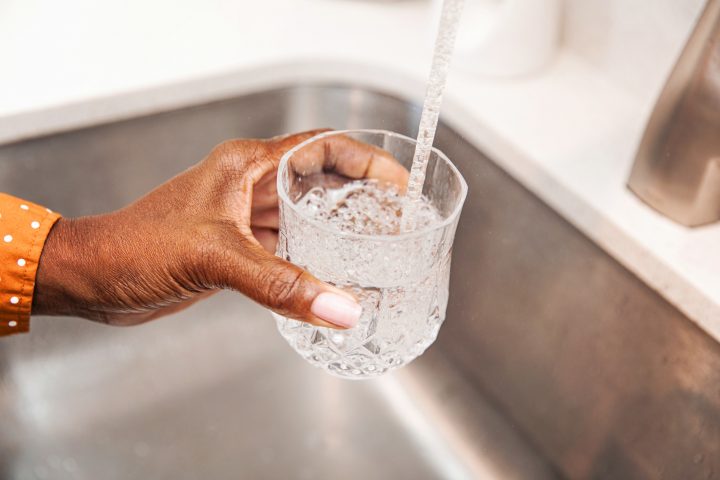While a number of communities across Manitoba struggle through drought conditions and are taking extreme measures to preserve water, the city of Winnipeg isn’t at risk.

Tim Shanks of the city’s water and waste department told 680 CJOB that Winnipeg’s water source — Shoal Lake, near the Manitoba/Ontario border — is well-protected against drought situations, even in bone-dry conditions like the province is currently facing.
“Shoal Lake is a little bit further out of the Red River Valley,” said Shanks.
“It’s slightly different climatic conditions right now. It’s still dry, but it’s not quite as a severe drought as we’re seeing here in southern Manitoba.
“So that mitigates it somewhat — the lake levels are sort of low for July, not unprecedented.”
Shanks said the lake being “low” means it only varies a few feet in any given year, and there’s such a large capacity that it’s not a significant impact.
Construction of the Winnipeg Aqueduct was completed more than a century ago — in 1919 — at a time when Winnipeg was growing rapidly, so the lake was specifically selected for its ability to support a large population.
“When the city selected Shoal Lake as a water supply, it was based on the quality of the water,” said Shanks.
- Life in the forest: How Stanley Park’s longest resident survived a changing landscape
- ‘Love at first sight’: Snow leopard at Toronto Zoo pregnant for 1st time
- Carbon rebate labelling in bank deposits fuelling confusion, minister says
- Buzz kill? Gen Z less interested in coffee than older Canadians, survey shows
“The water quality remains excellent, but it was also (based) on the capacity at the time of the actual construction, when the city was growing quite rapidly. The population projections — something of a ‘Chicago of the north’ sort of thing — it was doubling its population quite rapidly.
“So the projection was we needed a water supply that could handle a city of over a million people. It’s got that capacity, the lake and our aqueduct system.”
The city, he said, actually uses less water overall than it did 30 years ago, due to Winnipeggers embracing water conservation and household items like low-flow toilets becoming the norm, despite the population growth.
Winnipeg, in fact, uses significantly less water on average than other Canadian cities.
“Winnipeg is definitely a water conservation success story.”
“I don’t want to take away from the fact that we still obviously promote water conservation, and then look to minimize water leakage and manage those resources as best we can.
“You never want to take that stuff for granted, but we are in a pretty good spot.”

Unfortunately, for municipalities outside of Winnipeg, that’s not necessarily the case.
Greg Archibald, CEO of the Pembina Valley Water Co-op, told 680 CJOB his organization declared a drought state of emergency earlier this week for its 14 municipal members in southern Manitoba due to the low levels of the Red River.
“If you look at the four-week period starting about June 25 to July 27, the flow rate in the river measured at Emerson,” Archibald said, “we had a reduction of half of the flow, and the river went down 20.5 inches, so for us that was very significant.”
Archibald said divers were brought in to measure the levels at the two water treatment plants at Letellier and Morris, which didn’t yield very positive results.
“Our follow-up is that we’re going into a little bit of an emergency process here, thinking about how we’re going to keep the level up in the river,” he said.
“There’s still quite a bit of water in the river, but it’s going down, and we’ve got to keep a pool where our intakes are so we can continue to take the water out of there.
“We’re also looking at how we can store some water as a backup if this drought continues.”
Archibald said the first step of the state of emergency has been to reduce the amount of water provided to the member communities by 15 per cent.





Comments